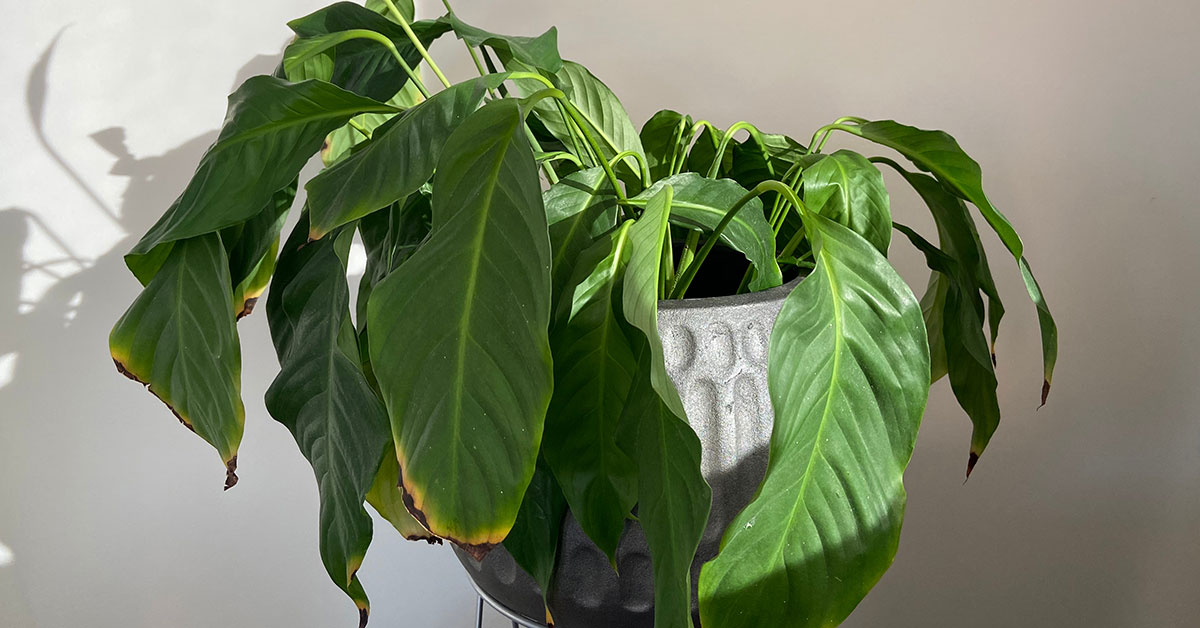Peace lilies are beautiful and low-maintenance houseplants that bring a touch of green to any home. Peace lilies are native to the tropical regions of the Americas, from southern Mexico and the Caribbean south to Argentina. They are considered attractive to many gardeners, with large, glossy leaves and white flowers that add beauty and texture to a garden or home. But like with all plants, they can occasionally succumb to problems, one of which is yellowing leaves. In this article, we’ll cover the signs, causes, and solutions for peace lily leaves turning yellow. With a few simple steps, you’ll be able to keep your peace lily healthy and vibrant.
Why your peace lily leaves are turning yellow
Peace lily leaves turning yellow is a common problem that many gardeners encounter. Even experienced gardeners can make mistakes that cause yellowing leaves. It’s important to identify quickly why your plant’s leaves are turning yellow.
To identify the cause of this problem, the first step is to check the soil for moisture. If the soil is dry, then the plant may need more water. If the soil is too wet, then the plant may be suffering from root rot. Additionally, the soil should be tested for pH levels to ensure that the soil is not too acidic or alkaline. If the pH levels are off, then the plant may need soil amendments to bring it back to the desired levels. Finally, the plant should be examined for pests or diseases. If there are signs of pests or diseases, then a course of treatment should be implemented to remedy the issue.
How to treat yellow peace lily leaves
If you notice your peace lily leaves turning yellow, it is likely due to overwatering, underwatering, or a nutrient deficiency. To treat yellowing peace lily leaves, start by examining your watering and fertilizing routine. Overwatering can be a direct cause of the problem. All that is required is to reduce the frequency of watering. If you’re underwatering, increase the frequency of watering and check the soil for adequate moisture before watering.
Nutrient deficiencies can also be a major reason for yellowing leaves. Fertilize the plant with a balanced fertilizer about once a month. Additionally, make sure the peace lily is in a well-lit area, but not direct sunlight, and maintain comfortable temperatures around 65-80 degrees Fahrenheit. With a few simple adjustments to your care routine, your peace lily leaves should start to turn green again.
Peace Lily Leaves Turning Yellow From Pests And Diseases
When dealing with pests that cause peace lily leaves to turn yellow, it is important to take action quickly. Start by inspecting the plant for signs of pests such as aphids, mites, or mealybugs. If any pests are found, use a cotton swab dipped in rubbing alcohol to remove them from the plant. To prevent future problems, regularly spray the plant with a mixture of water and insecticidal soap. Be sure to spray both the top and bottom of the leaves. Additionally, you may need to repot the plant in new soil to prevent pests from returning. Finally, place the plant in a spot with indirect sunlight to help it thrive.
Treating Diseases That Harm Peace Lily Leaves
If your peace lily leaves are turning yellow, it could be due to a variety of diseases. The most common cause of yellowing leaves is a fungal infection, such as root rot or powdery mildew. To treat a fungal infection, remove the affected leaves and dispose of them. Then, ensure that the soil is well-draining and the plant is not over-watered.
If root rot is suspected, repot the plant in fresh soil and ensure that the pot has drainage holes. You may also want to apply an appropriate fungicide to the soil to prevent further fungal infections. If the roots appear to be mushy, brown, or damaged, carefully remove them before repotting.
If the yellowing is due to nutrient deficiency, apply a balanced liquid fertilizer to the soil in accordance with the label instructions. A standard indoor tropical plant fertilizer should be more than sufficient. When possible, select an organic brand. Be sure to monitor the plant for signs of improvement and adjust your care routine as needed.













